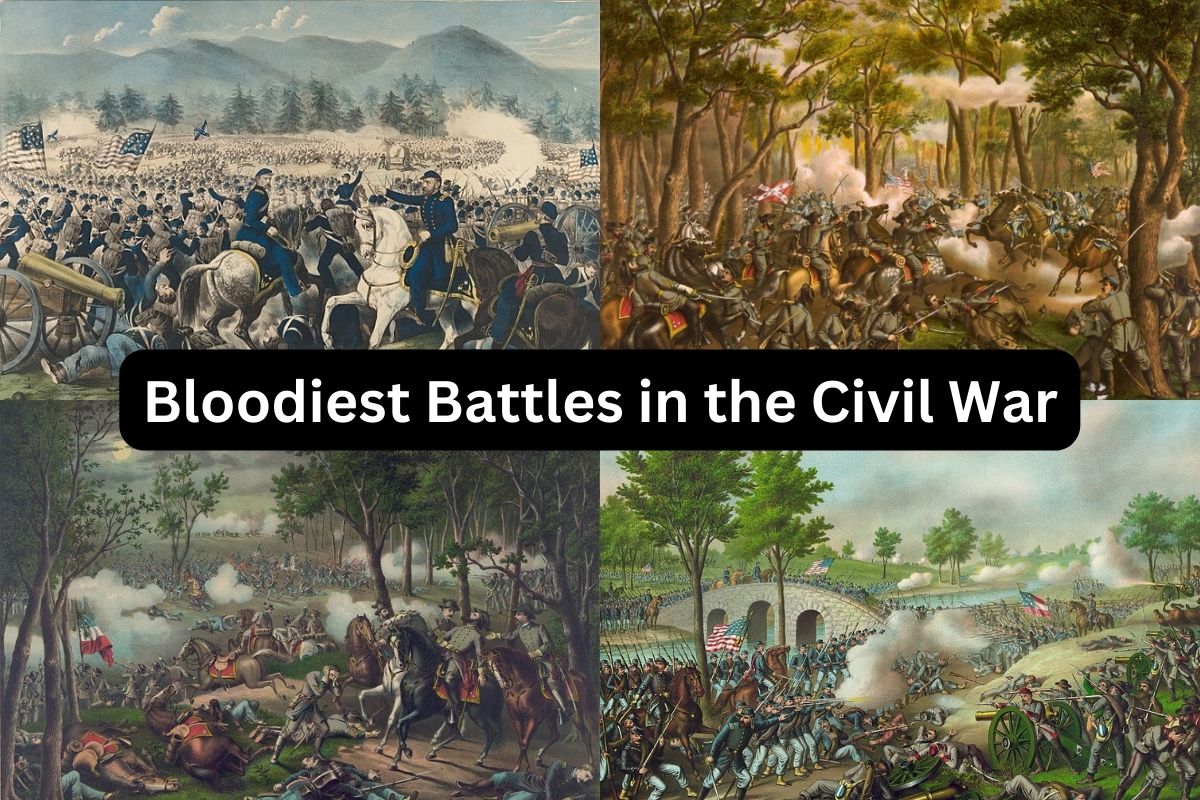The American Civil War was a devastating conflict that took place from 1861 to 1865, resulting in the loss of an estimated 620,000 soldiers’ lives.
The battles of the Civil War were fought across the country, from the East Coast to the Mississippi River, and were characterized by intense fighting, high casualties, and significant tactical and strategic maneuvers.
Among these battles, there were some that were particularly bloody and significant in terms of their impact on the outcome of the war.
In this context, this article provides an introduction to the some of the most bloodiest battles of the Civil War, examining their key characteristics and their impact on the overall course of the war.
1. Battle of Gettysburg (July 1-3, 1863) – Estimated 51,000 casualties
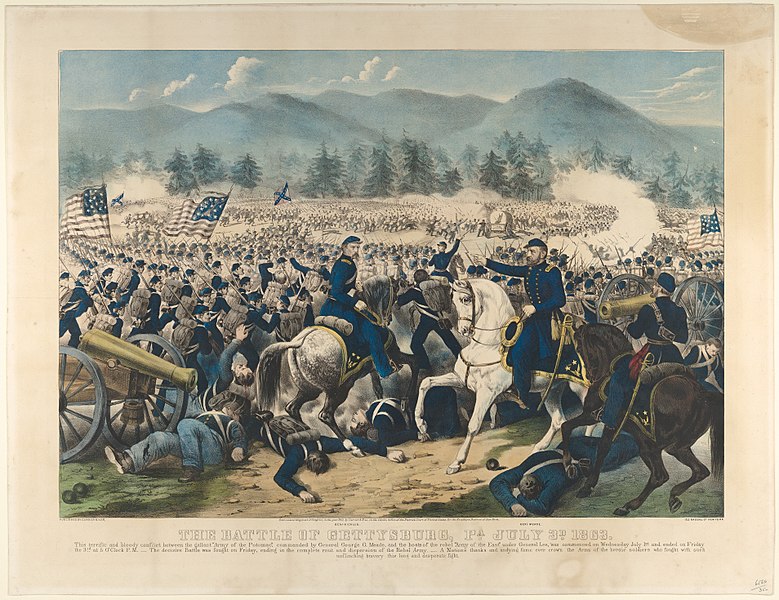
The Battle of Gettysburg was fought from July 1 to July 3, 1863, and is considered one of the most significant battles of the American Civil War.
Also Read: Wars in the 1800s
The battle was fought between the Confederate Army of Northern Virginia, commanded by General Robert E. Lee, and the Union Army of the Potomac, commanded by General George G. Meade.
The battle resulted in an estimated 51,000 casualties, making it the bloodiest battle of the Civil War. The Union army suffered around 23,000 killed, wounded, or missing, while the Confederate army suffered around 28,000 casualties.
Also Read: Timeline of the Battle of Gettysburg
The battle is notable for its strategic significance, as it marked the farthest advance of Confederate forces into Union territory and a turning point in the war’s outcome.
The Union army’s victory at Gettysburg forced the Confederate army to retreat and marked the beginning of the end of the Confederacy’s military campaign.
The battle is also notable for the famous Pickett’s Charge, a failed Confederate assault on the Union army’s center that has become one of the most iconic moments in American military history.
2. Battle of Chickamauga (September 19-20, 1863) – Estimated 34,000 casualties
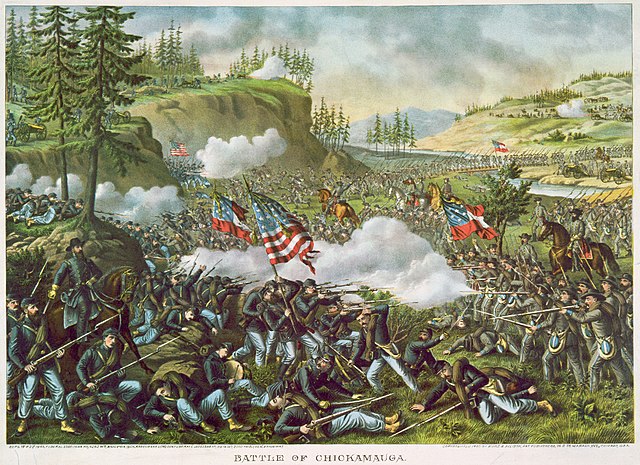
The Battle of Chickamauga was fought on September 19-20, 1863, in northern Georgia and was one of the bloodiest battles of the American Civil War.
The battle was fought between the Union Army of the Cumberland, commanded by General William Rosecrans, and the Confederate Army of Tennessee, commanded by General Braxton Bragg.
The battle resulted in an estimated 34,000 casualties, making it one of the costliest battles of the Civil War. The Union army suffered around 16,000 casualties, while the Confederate army suffered around 18,000 casualties. The battle is notable for its fierce fighting, with both sides suffering heavy losses and engaging in close-quarters combat.
The Union army’s defeat at Chickamauga forced them to retreat to Chattanooga, Tennessee, where they were besieged by Confederate forces. However, the Union army was able to break the siege and ultimately win the Battle of Chattanooga, which led to their control of much of Tennessee and Georgia.
The Battle of Chickamauga is also notable for being the largest battle fought in the Western Theater of the Civil War.
3. Battle of Spotsylvania Court House (May 8-21, 1864) – Estimated 30,000 casualties
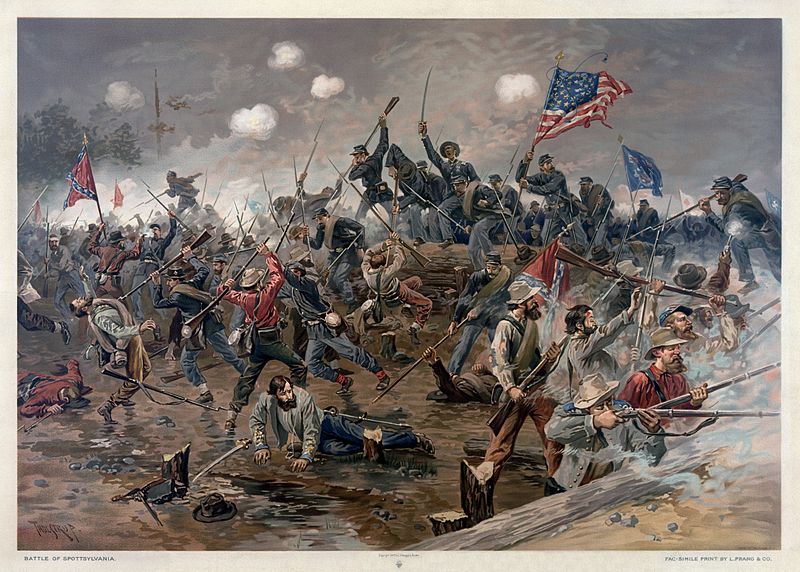
The Battle of Spotsylvania Court House was fought from May 8 to May 21, 1864, during the American Civil War. It was a significant battle of General Ulysses S. Grant’s Overland Campaign and was fought between Union and Confederate forces near Spotsylvania Court House, Virginia.
The battle resulted in an estimated 30,000 casualties, with the Union army suffering around 18,000 killed, wounded, or missing, and the Confederate army suffering around 12,000 casualties. The battle is known for its intense and prolonged fighting, with both sides engaging in fierce hand-to-hand combat and trench warfare.
The Union army’s unsuccessful attempts to break through the Confederate defenses resulted in a costly stalemate and forced Grant to rethink his strategy for the remainder of the campaign. The battle is also notable for the death of Confederate General John Sedgwick, who was killed by a Union sharpshooter while urging his men to continue fighting.
Despite the high casualties, the battle did not result in a clear victory for either side and ultimately led to the continuation of the Overland Campaign.
4. Battle of Wilderness (May 5-7, 1864) – Estimated 28,000 casualties
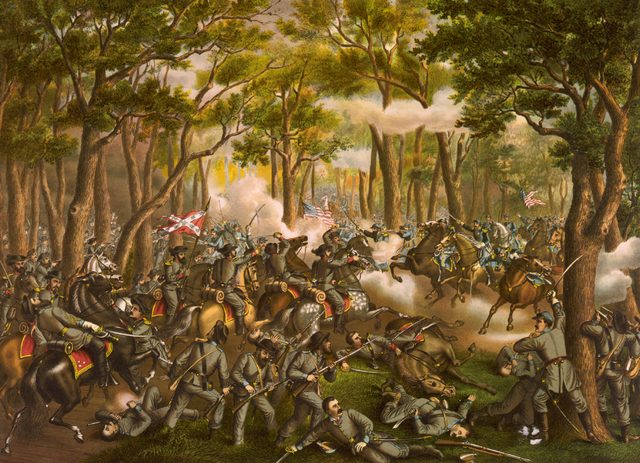
The Battle of Wilderness was fought from May 5 to May 7, 1864, during the American Civil War. It was the first battle of General Ulysses S. Grant’s Overland Campaign and was fought between Union and Confederate forces in a dense forested area known as the Wilderness, near Fredericksburg, Virginia.
The battle resulted in an estimated 28,000 casualties, with both sides suffering approximately equal losses. The Union army suffered around 17,000 killed, wounded, or missing, while the Confederate army suffered around 11,000 casualties.
The battle is known for its difficult terrain and the confusion caused by the dense forest, which made it difficult for commanders to effectively communicate with their troops.
The battle is also notable for the heavy casualties suffered by both sides, despite the limited gains made by either army. The battle ultimately resulted in a stalemate and forced Grant to rethink his strategy for the remainder of the Overland Campaign.
Despite the high casualties and lack of a clear victory, the Battle of Wilderness is considered a significant battle in the Civil War due to its impact on the overall course of the campaign.
5. Battle of Chancellorsville (April 30-May 6, 1863) – Estimated 30,000 casualties
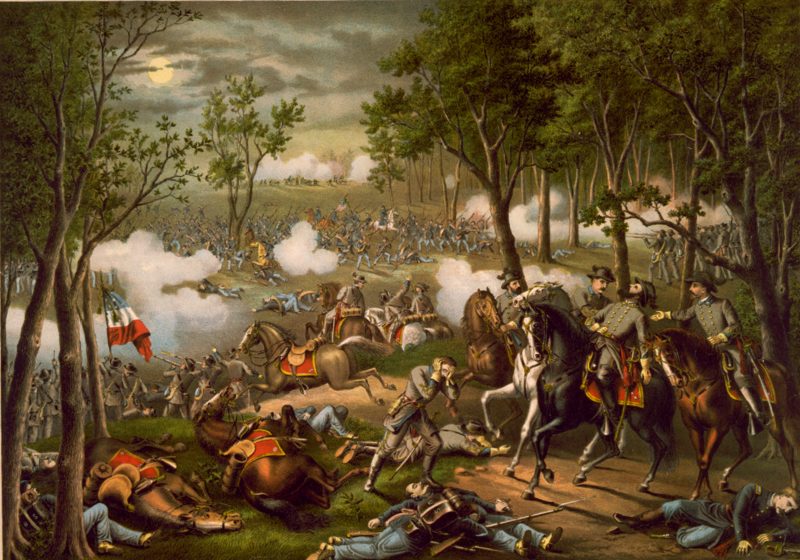
The Battle of Chancellorsville was fought from April 30 to May 6, 1863, during the American Civil War. It was a significant battle fought between the Union Army of the Potomac, commanded by General Joseph Hooker, and the Confederate Army of Northern Virginia, commanded by General Robert E. Lee.
The battle resulted in an estimated 30,000 casualties, with the Union army suffering around 17,000 killed, wounded, or missing, and the Confederate army suffering around 13,000 casualties.
The battle is known for its innovative tactics employed by General Lee, including his famous “flanking maneuver” that allowed his army to successfully split the Union army’s forces in two.
The battle is also notable for the death of Confederate General Stonewall Jackson, who was accidentally shot by one of his own men while scouting the Union army’s position.
Despite the significant casualties and loss of General Jackson, the Battle of Chancellorsville is considered a significant Confederate victory due to its impact on the overall course of the war. The Union army was forced to retreat and regroup, allowing the Confederate army to continue its advance into Union territory.
The battle is also notable for its impact on General Hooker’s reputation, as his defeat at Chancellorsville led to his removal from command and replacement by General George G. Meade.
6. Battle of Shiloh (April 6-7, 1862) – Estimated 24,000 casualties
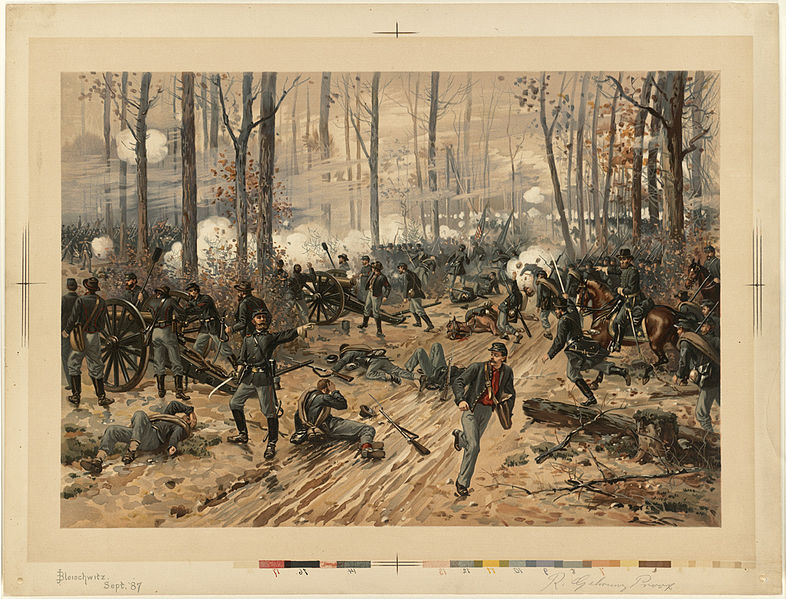
The Battle of Shiloh was fought on April 6-7, 1862, in southwestern Tennessee and was one of the bloodiest battles of the American Civil War up to that point.
The battle was fought between the Confederate Army of Mississippi, commanded by General Albert Sidney Johnston, and the Union Army of the Tennessee, commanded by General Ulysses S. Grant.
The battle resulted in an estimated 24,000 casualties, making it one of the costliest battles of the Civil War up to that point. The Union army suffered around 13,000 killed, wounded, or missing, while the Confederate army suffered around 11,000 casualties.
The battle is known for its intense and chaotic fighting, with both sides suffering heavy losses and engaging in close-quarters combat. The Union army was able to repel the Confederate assault, despite being caught off guard, and ultimately emerged victorious.
The battle is also notable for its impact on the overall course of the war, as it marked the beginning of General Grant’s rise to prominence and his eventual command of all Union armies.
The Battle of Shiloh is also notable for its significance in terms of its impact on the ongoing struggle for control of the Mississippi River, which was a critical supply line for both Union and Confederate forces.
7. Battle of Stones River (December 31, 1862-January 2, 1863) – Estimated 24,000 casualties
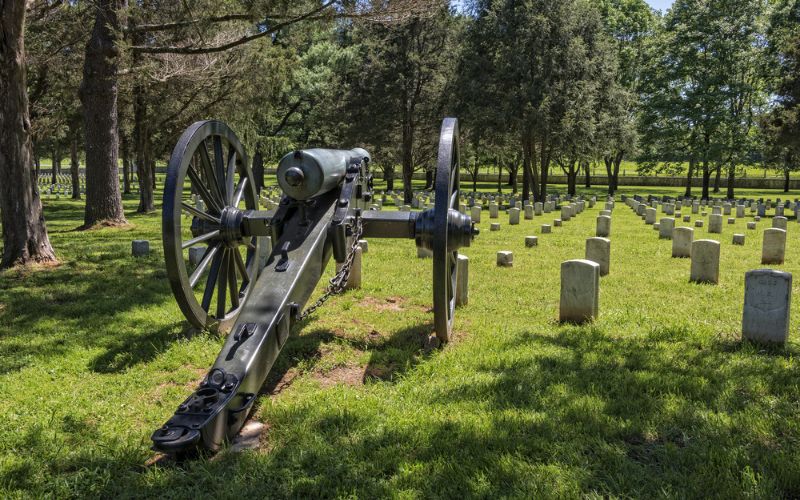
The Battle of Stones River, also known as the Battle of Murfreesboro, was fought from December 31, 1862 to January 2, 1863, during the American Civil War. It was a significant battle fought between the Union Army of the Cumberland, commanded by General William S. Rosecrans, and the Confederate Army of Tennessee, commanded by General Braxton Bragg.
The battle resulted in an estimated 24,000 casualties, with both sides suffering significant losses. The Union army suffered around 12,700 killed, wounded, or missing, while the Confederate army suffered around 11,700 casualties.
The battle is known for its intense and close-quarters combat, with both sides engaging in fierce hand-to-hand fighting. The battle ultimately resulted in a Union victory, forcing the Confederate army to retreat and giving the Union army control of much of Tennessee.
The Battle of Stones River is also notable for its impact on the overall course of the war, as it marked a significant Union victory following a series of Confederate victories and bolstered Union morale after the setbacks at Fredericksburg and Chickamauga.
8. Battle of Antietam (September 17, 1862) – Estimated 23,000 casualties
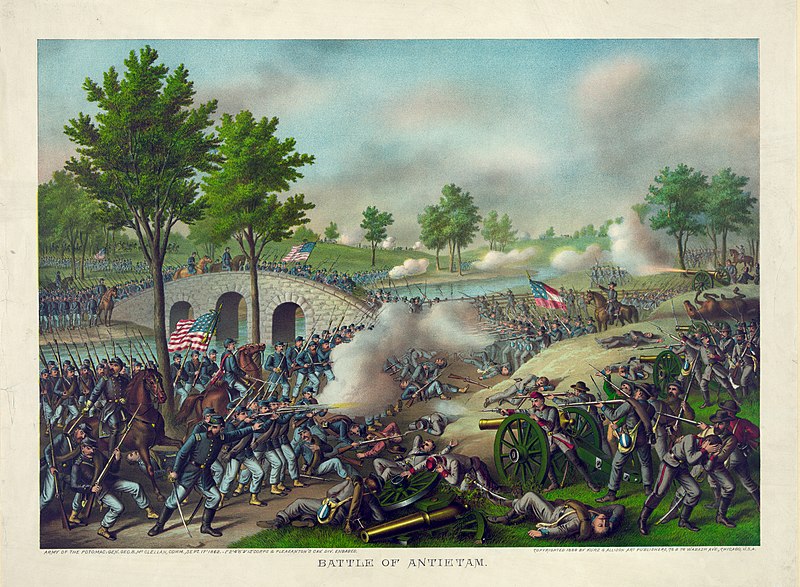
The Battle of Antietam, also known as the Battle of Sharpsburg, was fought on September 17, 1862, near Sharpsburg, Maryland, and was the first major battle of the American Civil War fought on Union soil.
It was fought between the Confederate Army of Northern Virginia, commanded by General Robert E. Lee, and the Union Army of the Potomac, commanded by General George B. McClellan.
The battle resulted in an estimated 23,000 casualties, with the Union army suffering around 12,400 killed, wounded, or missing, while the Confederate army suffered around 10,300 casualties. The battle is known for its intense and bloody fighting, with both sides suffering significant losses and engaging in close-quarters combat.
The battle ultimately resulted in a tactical Union victory, forcing the Confederate army to retreat back into Virginia.
The Battle of Antietam is also notable for its impact on the overall course of the war, as it gave President Abraham Lincoln the political capital he needed to issue the Emancipation Proclamation, which declared all slaves in Confederate-held territories to be free.
The Battle of Antietam is considered one of the most significant battles of the Civil War and is often cited as a turning point in the conflict.
9. Second Battle of Bull Run (August 28-30, 1862) – Estimated 22,000 casualties
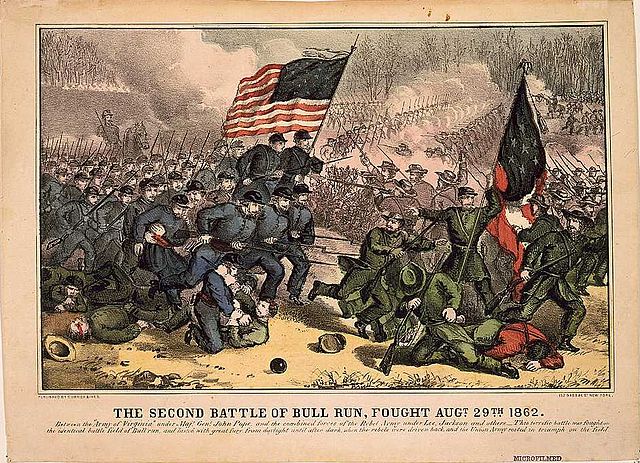
The Second Battle of Bull Run, also known as the Second Battle of Manassas, was fought from August 28 to August 30, 1862, near Manassas, Virginia, and was a significant battle of the American Civil War.
It was fought between the Confederate Army of Northern Virginia, commanded by General Robert E. Lee, and the Union Army of Virginia, commanded by General John Pope.
The battle resulted in an estimated 22,000 casualties, with the Union army suffering around 14,000 killed, wounded, or missing, while the Confederate army suffered around 8,000 casualties.
The battle is known for its decisive Confederate victory, which allowed General Lee to launch his first invasion of the North and brought the Confederate army within striking distance of Washington, D.C.
The battle is also notable for the heavy losses suffered by the Union army, which was caught off guard by General Lee’s tactics and suffered a significant defeat.
The Battle of Second Bull Run is considered a significant Confederate victory and marked a turning point in the Eastern Theater of the Civil War, setting the stage for the Confederate invasion of Maryland and the Battle of Antietam.
10. Battle of Cold Harbor (May 31-June 12, 1864) – Estimated 18,000 casualties
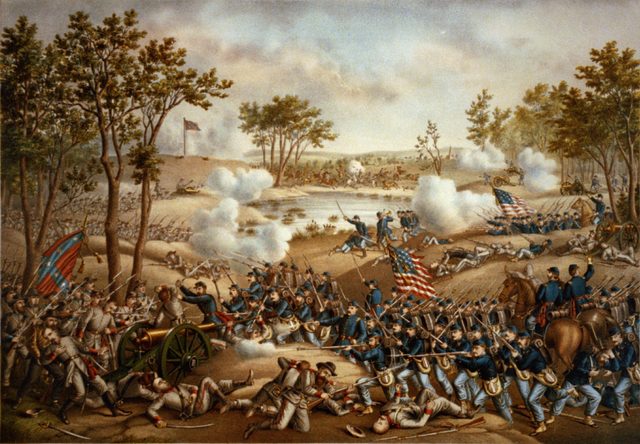
The Battle of Cold Harbor was fought from May 31 to June 12, 1864, during the American Civil War. It was a significant battle of General Ulysses S. Grant’s Overland Campaign and was fought between Union and Confederate forces near Mechanicsville, Virginia.
The battle resulted in an estimated 18,000 casualties, with the Union army suffering around 12,000 killed, wounded, or missing, and the Confederate army suffering around 6,000 casualties.
The battle is known for its heavy losses and the lopsided nature of the fighting, with the Union army suffering significantly more casualties than the Confederates.
The Union army’s unsuccessful frontal assaults against well-entrenched Confederate positions resulted in a devastating defeat for the Union forces and forced Grant to reconsider his tactics for the remainder of the campaign.
The battle is also notable for the controversy surrounding the Union army’s assault, which has been criticized by historians for its poor planning and execution.
